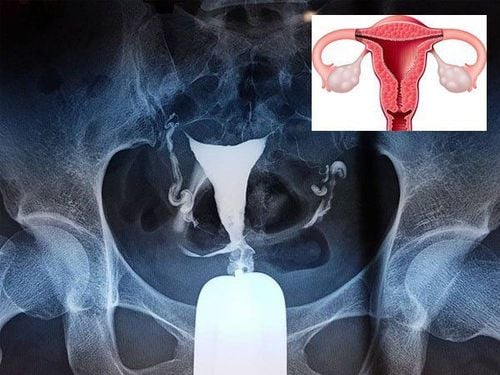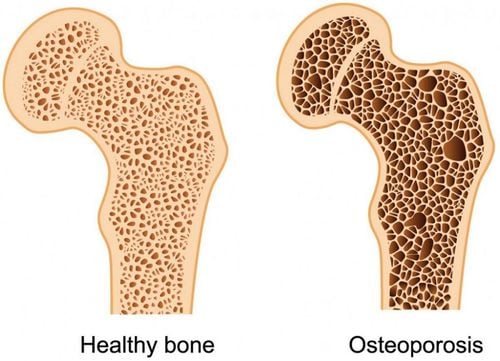This is an automatically translated article.
The spinal cord is part of the central nervous system and plays a very important role in the body. Spinal cord tumors are tumors that grow in or out of the spinal cord parenchyma, causing destruction of the spinal parenchyma, and compression of the spinal cord or nerve roots. Spinal cord tumors can lead to many dangerous complications if not detected and treated promptly.
1. What is a spinal tumor?
Spinal cord tumors are tumors that grow in the spinal cord parenchyma, either directly destroying the tissue or outside the spinal parenchyma, causing compression of the spinal cord or nerve roots. Thus, spinal cord tumors can be divided into two types depending on the location of tumor growth, including:
1.1 Intramedullary tumors Intramedullary tumors are tumors that form in the spinal parenchyma, the most common being myeloma. gliomas (eg, astrocytomas or endothelial tubules,). Intramedullary tumors have the ability to directly invade and destroy the pulp parenchyma. In addition, they can also extend across multiple segments of the spinal cord or cause a hollow pulp.
1.2 Extramedullary Tumors Extramedullary tumors will form and grow outside the pulp parenchyma, which can be intradural or epidural. Most intradural tumors are benign, most often medullomas and neurofibromas. Epidural tumors can be metastatic tumors from carcinomas of the lung, breast, prostate, kidney, or thyroid or lymphoma (such as retinoblastoma, Hodgkin's lymphoma, malignancy). lymphoid epithelium,). Tumors inside and outside the dura can also be malignant and cause cancer of the spinal cord. They also cause nerve damage by compressing the spinal cord or nerve roots.

Các khối u bên trong và bên ngoài màng cứng cũng có thể là khối u ác tính và gây nên ung thư tủy sống
2. What are the symptoms of a spinal cord tumor?
Pain is a relatively early sign, especially for epidural tumors. The pain will increase gradually, not related to movement and worsen depending on the position. Pain may arise in the back and then radiate along the sensory innervation of the skin. Especially in patients with primary tumors of the breast, lung, thyroid, prostate, kidney or lymphoma, if unexplained back pain is present, it is advisable to seek medical attention for myeloma. bone or not. In addition, symptoms such as fever, fatigue, confusion, and unexplained weight loss may appear.
Neurological symptoms related to the spinal cord will appear later, such as muscle spasticity, muscle weakness, loss of control and sensory disturbances in the corresponding spinal cord region and below it. Symptoms usually appear on both sides. Symptoms of spinal cord compression may also appear and worsen rapidly, resulting in paralysis of the legs and urinary incontinence. Symptoms of nerve root compression are also common, such as pain and paresthesias, followed by loss of sensation, muscle weakness, and muscle atrophy if chronically compressed. These symptoms usually appear along the innervation of the affected nerve root.
3. Is spinal cord tumor dangerous?
Whether benign or malignant, spinal cord tumors are quite dangerous. They can penetrate and destroy the spinal parenchyma, cause nerve damage by compressing the spinal cord or nerve roots, thereby leading to a series of complications such as movement disorders, sensory disturbances, muscle weakness. Therefore, when there are abnormal signs, you need to immediately go to medical facilities for timely examination and treatment.

Xét nghiệm máu chẩn đoán u tủy sống
4. How is spinal cord tumor diagnosed?
There are many types of tests that may be ordered to diagnose myeloma, including:
4.1. Blood tests Bone marrow is where all types of blood cells are made. Therefore, a blood test can detect abnormalities in the bone marrow.
4.2. Bone marrow cell biopsy During a biopsy, a small sample of bone marrow is removed and sent to a laboratory. Here, technicians will observe and look for abnormalities in the patient sample.
4.3. Imaging Your doctor may use one or more imaging techniques to detect and check for abnormalities in the bone marrow. Techniques that can be used include:
X-ray CT MRI PET CT In addition, some diagnostic techniques during treatment can also be performed to assess the effectiveness of treatments. or monitor disease progression.
In summary, myeloma can lead to a variety of complications such as movement disorders, sensory disturbances, muscle weakness, etc. The treatment of myeloma depends on many factors, including the type. cancer, extent, time of detection, age and overall health status. If diagnosed early, patients are likely to respond well to treatment and not experience future relapses. Therefore, when there are abnormal signs, you need to immediately go to medical facilities for timely examination and treatment.
Please dial HOTLINE for more information or register for an appointment HERE. Download MyVinmec app to make appointments faster and to manage your bookings easily.













